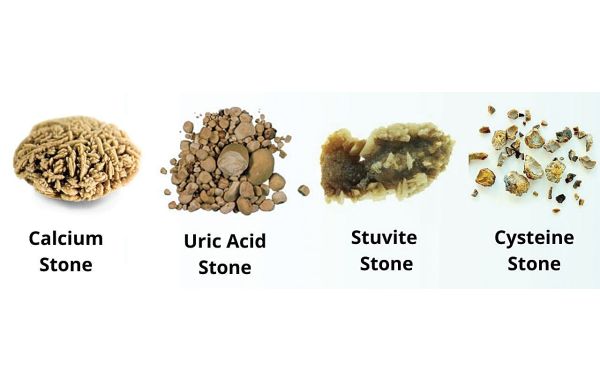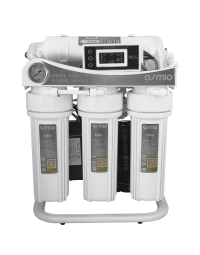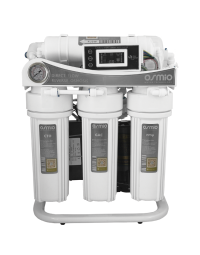The Impact of Minerals in Water on Your Health: Exploring Evidence
Introduction
Water and diet are integral components of our daily lives, influencing our health in diverse ways. This blog will unravel the connection between hard water, protein intake, and their effects on human health. One frequently asked question we get every day is whether removing minerals in water harms health and if drinking reverse osmosis or distilled water is bad for health. Distillers and reverse osmosis systems remove minerals and many add minerals back in. Let's explore this topic with evidence. First of all, it is important to distinguish between the form the minerals are in, organic or inorganic.
The distinction between organic and inorganic minerals lies in their chemical structure and source, and it can have implications for how they are absorbed and utilized in the human body.
Organic minerals are minerals that are bound to organic molecules, typically derived from living organisms. Organic minerals often form complex structures with carbon-containing compounds, such as amino acids. Examples include minerals found in plants, animals, and organic supplements. Plants absorb inorganic minerals from the soil and convert them into organic forms. For instance, calcium in plants is often in the form of calcium oxalate. Some argue that organic minerals may be more bioavailable and easily absorbed by the body because they are in a form that closely resembles the compounds the body uses. Chelated minerals, where minerals are bound to organic molecules, are an example of enhanced bioavailability. Organic minerals play a role in enzymatic processes, cellular function, and structural components in living organisms. For instance, organic forms of minerals are integral to the formation of certain proteins and enzymes.
Inorganic minerals are not bound to carbon-containing compounds and do not come from living organisms. Inorganic minerals are commonly found in soil, rocks, and water. Examples include minerals like calcium, magnesium, and iron in their elemental forms. While the absorption of inorganic minerals can be influenced by various factors, such as the presence of other nutrients, some inorganic minerals are readily absorbed by the body. For example, calcium and magnesium from water and food sources are commonly absorbed but to different levels.
In summary, both organic and inorganic minerals contribute to human health, but the source, structure, and bioavailability may differ. So we need to dive deeper.
The Role of Hard Water in Calcium Stone Formation
Calcium stones, also known as kidney stones or calcium oxalate stones, are solid crystal deposits that can form in the kidneys or urinary tract. They are primarily composed of calcium oxalate, though other minerals may be involved.[1] The kidneys play a crucial role in maintaining the body's balance of water, minerals, and salts. The filtration process involves removing waste products, including calcium, oxalate, and phosphate, from the blood to be excreted as urine.
Under certain conditions, these substances may become excessively concentrated in the urine. When this happens, crystals can form. If these crystals aggregate and bind together, they can develop into larger masses or stones.
Studies, such as one published in the journal "Urology" in 2006 by El-Reshaid et al., have suggested a potential link between the consumption of hard water and an increased risk of calcium stone formation. The association between hard water and kidney stones has been recognized since the early 1990s. Continued research suggests that individuals residing in regions with hard water may face a higher risk of developing kidney stones.
Hard water contains inorganic calcium. When oxalates, naturally present in urine, lack sufficient bioavailable calcium to break them down in the stomach, they may proceed towards the kidneys. In the stomach, oxalate can combine with the non-organic calcium from hard water, contributing to the formation of kidney stones.
Research, such as that by El-Reshaid et al. (2006), suggests a link between hard water and an increased risk of kidney stones. Consuming hard water, especially at 10 grains per gallon, may elevate urinary calcium concentration by 50%, increasing the risk of kidney stones by 300%.
Protein's Impact on Urinary Calcium Loss
Increased Urinary Calcium Excretion...
Protein consumption, especially from animal sources, can lead to hypercalciuria, which is excessive calcium excretion in urine. This is associated with sulfur-containing amino acids like cysteine and methionine. As the body metabolizes protein, amino acids break down, increasing urine acidity. This prompts the body to draw calcium from bones, leading to its excretion in urine. High protein intake can interfere with calcium reabsorption in renal tubules, contributing to hypercalciuria. Balancing protein sources, ensuring adequate calcium intake, and staying hydrated are strategies to minimize adverse effects.
Does pure water strip minerals from the body?
Pure water, in its truest form, contains only H2O molecules and is devoid of minerals or impurities. Drinking pure water, such as distilled water or water produced through reverse osmosis, generally does not add minerals to the body, and there's a common misconception that it may strip minerals from the body.
However, the idea that pure water "strips" minerals from the body is somewhat misleading. The primary concern related to pure water consumption is not about it actively removing minerals from the body but rather its potential to dilute electrolytes when consumed excessively.
Here are a few considerations:
- Electrolyte Dilution: Pure water does not contain electrolytes (essential minerals like sodium, potassium, calcium, and magnesium). If you consume extremely large quantities of pure water, it could potentially lead to electrolyte dilution in the body. This situation, known as hyponatremia, is rare and typically occurs with excessive water intake in a short period, combined with inadequate electrolyte intake.
- Balanced Diet: The main source of essential minerals for the body is typically through the diet, not just water. A balanced diet that includes a variety of nutrient-rich foods provides the necessary minerals for bodily functions.
- Minerals from Food: While water contributes to overall hydration, the minerals your body needs are obtained from a diverse range of foods, including fruits, vegetables, dairy products, and other dietary sources. The best form is from jelly-like fruits which contain structured water that takes a hexagonal shape. This is also known as “exclusion zone” water. This is how Aborigines have managed to go for days or even weeks without water, using the jelly-like hydrogen-oxygen combinations created by chia seeds and so on.
- Context Matters: In everyday scenarios where water consumption is within normal levels, the potential impact on mineral balance is negligible. It's essential to consider individual factors such as diet, overall health, activity levels, and the water someone is used to drinking.
Moving from tap water to pure water can be a shock to the system for many people, who may need to build up to it. Metabolic hydration comes from the hydrogen-producing gut bacteria making H2 gas combining from the 21% oxygen we currently breathe in the air. We also make molecular hydrogen and oxygen in the brain through neuro melanin, but this will be for a future blog post.
In summary, drinking pure water as part of a balanced and varied diet is generally safe for most people. The idea that it strips minerals from the body is not accurate in normal, moderate consumption. However, like many things, balance is key, and excessive intake of any substance, including water, can have unintended consequences. If you have specific concerns or health conditions, it's advisable to consult with us as we run a health and wellness center, Eternal Lake Nature Reserve where mind, body, and spirit are considered in a holistic way to guide people looking to improve their health and well-being.
References:
- Siener, R., et al. (2010). The role of water hardness and seasonality in the composition of urinary stones. Urological Research, 38(2), 111-117.
- Ettinger, B., et al. (2008). Potassium-magnesium citrate is an effective prophylaxis against recurrent calcium oxalate nephrolithiasis. Journal of Urology, 179(5), 1849-1853.
- El-Reshaid, K., et al. (2006). The role of water hardness in urolithiasis and nephrocalcinosis in the State of Kuwait. Urology, 68(3), 518-521.













